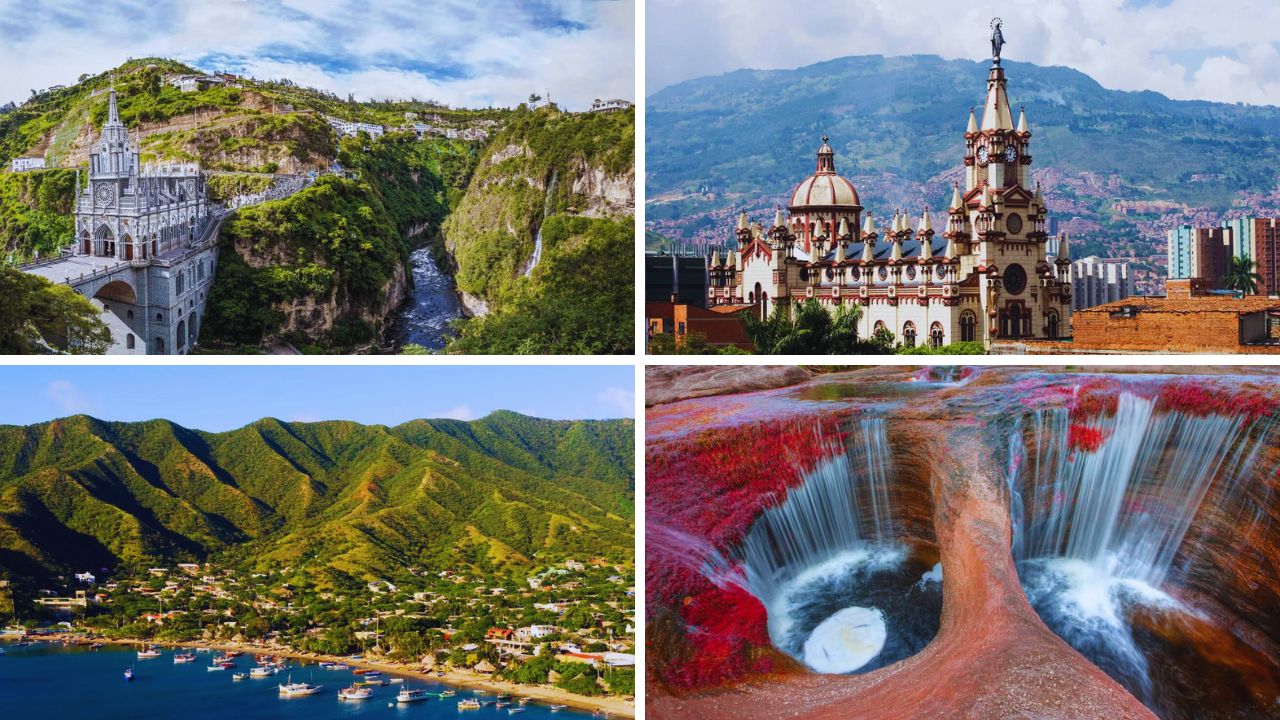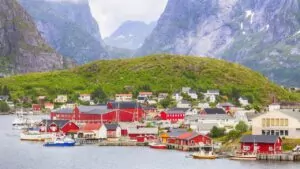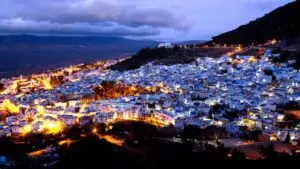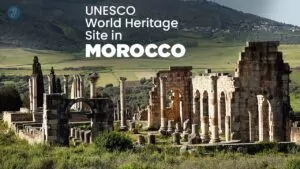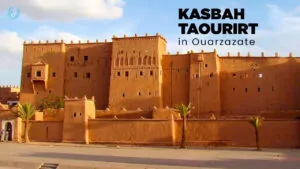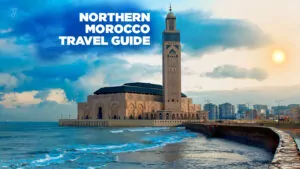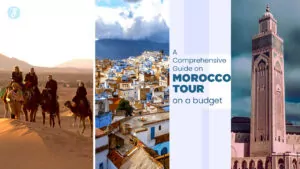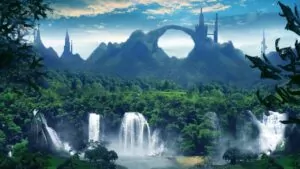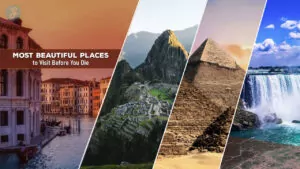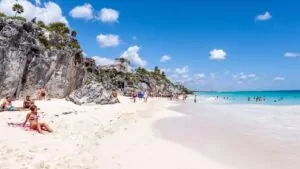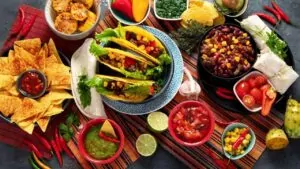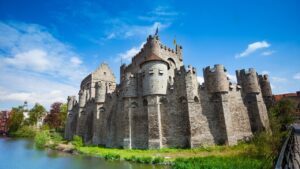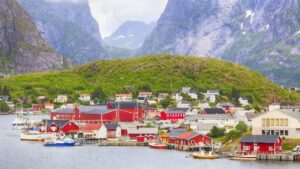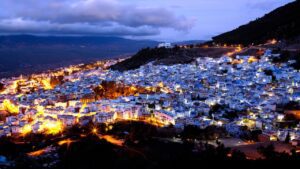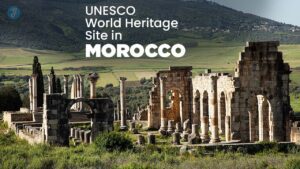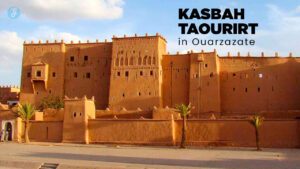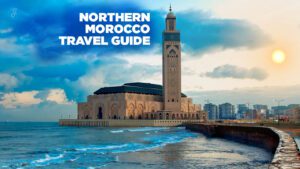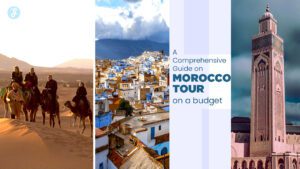Colombia is a country full of surprises and interesting fun facts about Colombia that may amaze you. With its rich cultural heritage, breathtaking landscapes, and vibrant traditions, there’s always something new to learn about this South American gem. Have you ever wondered what makes Colombia one of the most fascinating places in the world?
This article will highlight 30 fun facts about Colombia that will intrigue and educate you. From its diverse wildlife to its passionate love for soccer, these facts will give you a new appreciation for this dynamic nation. Dive in and discover what sets Colombia apart!
1. El Dorado Legend
El Dorado is one of the most fascinating legends in Colombia. Did you know that it was originally a term for a person, not a place? The Spanish Empire used “El Dorado” to describe the gilded chief of the Muisca tribe.
The Muisca tribe lived in the Andes region of Colombia. They would cover their chief in gold dust during a special ceremony. Then, he would dive into Lake Guatavita, an event that inspired awe.
As time went on, the story of El Dorado evolved. It moved from describing a person to a mythical city made entirely of gold. Explorers and conquistadors searched tirelessly for this city.
Many adventurers followed rumors deep into the uncharted territories of South America. People like Sir Walter Raleigh became obsessed. They risked their lives, hoping to find this lost city of gold, but none succeeded.
The legend of El Dorado continued to capture imaginations across the world. It even led to numerous expeditions, although none ever found the mythical city. Instead, they returned with tales of hardship and adventure.
Isn’t it fascinating how a story can evolve over time? What started as a ritual involving a gilded man has become one of history’s most enduring legends. The idea of a city of gold still sparks curiosity and wonder.
Could the discovery of the legendary city be truly remarkable? Even today, the legend of El Dorado remains a symbol of adventure and the human desire for riches. The story continues to be a significant part of Colombian folklore.
2. Tejo National Sport
Did you know that Tejo is Colombia’s national sport? It’s a unique and exciting game with roots in Colombia’s history. It’s similar to horseshoes, but with a thrilling twist—gunpowder!
A tejo is played by throwing a metal disc at a clay-covered target. The aim is to hit small paper triangles filled with gunpowder, called mechas, which explode on impact.
The regulation lanes for Tejo are typically 19.5 meters long and 2.5 meters wide. Players throw from a distance of about 15 meters. The target area presents a challenge due to its steep 30-degree angle.
Indigenous people in central Colombia originally played this sport over 450 years ago. They used golden discs, also known as zepquagosqua. Today, you can see these ancient discs in some regional museums.
Tejo isn’t just about hitting the target. The game has multiple scoring methods. If your tejo lands close to the bocín, a metal ring, you score points. Hitting and exploding a mecha earns even more points. For a perfect score, the tejo must land in the middle of the bocín.
Playing Tejo is a loud and lively experience. It involves skill, precision, and a bit of luck. The explosions from the mechas add an extra level of excitement that keeps players and spectators engaged.
Next time you visit Colombia, you must try playing Tejo. It’s a wonderful way to experience a piece of Colombian culture and have some explosive fun!
3. Coffee Cultural Landscape
The Coffee Cultural Landscape of Colombia is a UNESCO World Heritage Site. This region, also known as the Coffee Triangle, includes the departments of Caldas, Quindío, and Risaralda. It is known for producing some of the best coffee in the world.
I can’t help but be impressed by the beautiful scenery here. Rolling hills, lush greenery, and quaint towns make this region unique. The area’s rich volcanic soil and ideal climate conditions contribute to the high-quality coffee beans.
It’s fascinating to see the traditional coffee farms, also called fincas. These farms often welcome visitors, allowing them to learn about coffee cultivation and taste fresh brews. The charm of the region extends beyond coffee; the towns feature historical colonial architecture and vibrant culture.
The mule drivers from Antioquia are central to the coffee culture here. These hardworking individuals played a crucial role in establishing the coffee industry. The landscape’s history and beauty have made it a popular destination for both tourists and coffee enthusiasts.
Thermal springs, trails, and scenic views offer many activities for visitors. It’s a perfect place to breathe in the pure air and enjoy nature’s beauty.
The Coffee Cultural Landscape not only offers world-class coffee, but also a rich cultural experience. Exploring this region provides insight into Colombia’s history and the hard work behind each cup of coffee.
4. Cumbia Folk Music
Cumbia is an important part of Colombia’s cultural heritage. Originating in Colombia, cumbia blends African, Indigenous, and Spanish influences. It’s a lively and engaging musical style that brings people together through dance and rhythm.
In traditional cumbia, dancers move in a specific manner. Women make shuffling steps while men move around them in a zig-zag pattern. Cumbia dancing usually takes place at night, with women holding candles wrapped in colorful handkerchiefs.
Cumbia is performed by two main ensembles: the conjunto de cumbia and the conjunto de gaitas. The conjunto de cumbia has five instruments, including drums and flutes. The conjunto de gaitas features two duct flutes, a llamador drum, and a maraca.
Cumbia has a rich history. It began in the mid-17th century among African and Indigenous populations in Colombia. Over time, it spread across Latin America, with countries like Mexico, Argentina, and Peru adding their own touches.
Carnivals and festivals frequently feature cumbia performances. Though less common in everyday life now, it remains a staple during celebrations and cultural events. Couples dance in a circle around seated musicians, creating a captivating scene for spectators.
Cumbia’s influence extends beyond Colombia. It has inspired many Latin American music genres. Modern music across the continent incorporates its rhythms and styles. Cumbia continues to evolve, adapting to contemporary tastes while staying true to its roots.
5. Cartagena’s Walled City
Cartagena’s walled city is like stepping back in time. Eleven kilometers of fortress walls, constructed in 1586, surround the city. The builders built these walls to defend the city from pirate attacks and foreign invasions.
Walking along these walls is a must-do. You can stroll along them while enjoying views of the Caribbean Sea. It’s especially beautiful during sunset.
Cartagena’s walls are part of what makes the city a UNESCO World Heritage Site. The walls are not just historical relics; they have their own stories and secrets.
Inside the walled city, Old Town is a major highlight. Founded in the 16th century, it is filled with cobbled streets, colorful buildings, and vibrant plazas. It’s a perfect spot for history lovers and architecture fans.
The walls also have bastions and forts. These structures were crucial for the city’s defense. They add to the historical charm and significance of the walled city.
For a touch of luxury, the walled city offers old-world charm with its boutique hotels and fine dining options. You can also find hip nightlife spots and shops selling Colombian emeralds.
A walk through Cartagena‘s walled city is a mix of history and modern-day excitement. It’s a unique blend that you won’t find anywhere else.
6. San Andrés Beaches
San Andrés Island boasts some of the most beautiful beaches in Colombia. Located in the Caribbean, it’s a dream destination for beach lovers.
The sand here is soft and white, perfect for relaxing. The waters are warm and calm, making them ideal for swimming and snorkeling. San Luis Beach is a favorite spot on the east coast.
The beach near Rocky Cay is another must-see. This area offers a chance to explore or just enjoy a peaceful day by the water.
For adventure seekers, scuba diving is a popular activity. Although it can be pricey, the underwater scenery is spectacular, with vibrant reefs and diverse marine life.
Looking for a unique experience? Try renting an all-terrain vehicle to drive around the island and discover hidden beaches and scenic spots. The island’s weather is almost always great, making any time a favorable time to visit.
7. Bandeja Paisa
Bandeja Paisa is one of Colombia’s most iconic dishes. Originating from the Antioquia region, this hearty platter features a variety of tasty ingredients. It’s not just a meal; it’s an experience.
The dish typically includes red beans cooked with pork, white rice, ground meat, chicharrón (fried pork belly), fried eggs, and sweet plantains. It also features an arepa (corn cake), avocado, and chorizo.
People love Bandeja Paisa because of its rich flavors and satisfying portions. Farmers traditionally ate it for energy due to its high protein and calorie content. Today, it’s a favorite for anyone wanting to taste Colombia’s culinary heritage.
Bandeja Paisa represents more than just food. It reflects Colombia’s diverse regions and the mixture of cultures within the country. Eating Bandeja Paisa is like taking a culinary tour of Colombia.
The dish can be quite large, making it perfect for sharing or for those with a big appetite. In restaurants, it can cost between 4 USD and 13.50 USD, depending on the place.
When you visit Colombia, trying Bandeja Paisa is a must. Whether in a fancy restaurant or a local eatery, it’s a dish that showcases the warmth and richness of Colombian cuisine.
Bandeja Paisa is not just a meal for the Colombians; it’s a symbol of their tradition and lifestyle. Taking a bite is like tasting a piece of Colombian history.
8. Amazon Rainforest
Did you know that the Amazon Rainforest covers about a third of Colombia’s landscape? This vast, green expanse is part of the world’s largest tropical rainforest.
The Amazon Rainforest is incredibly biodiverse. It is home to thousands of plant and animal species. Many of these species are unique to Earth.
In the Colombian Amazon, Leticia is the key city. Located by the Amazon River, Leticia acts as the gateway to exploring this lush region.
The weather in the Amazon is warm and humid throughout the year. Temperatures average around 28 degrees Celsius. Rainfall is common, and the region receives plenty of rain each month.
The canopy of the rainforest is dense. This means that only a small amount of light reaches the forest floor. Walking through the rainforest can feel like stepping into a green, shadowy world.
I remember my trip to the Colombian Amazon vividly. The sight of endless trees and exotic wildlife was unforgettable. If you ever visit Colombia, don’t miss the chance to explore the Amazon Rainforest. It’s a unique and fascinating world waiting to be discovered.
Are you ready for this adventure? Pack your bags and prepare to be amazed by Colombia’s Amazon Rainforest.
9. Arepas
Did you know about the tasty Colombian treat called arepas? These delicious corn cakes are a staple in Colombian cuisine. You can find them in almost every Colombian home, made from a mixture of ground cornmeal, water, and a bit of salt.
One type of arepa is the Arepa Boyacense from Boyacá. It’s thick and round, often made with yellow corn flour. People usually add milk, butter, salt, and panela (a type of molasses) to the dough.
In the Antioquia region, there is the Arepa Paisa. This arepa is thin and crispy, made from white cornmeal. People often serve it with butter or cheese, which adds a savory touch. Sometimes, people top it with hogao, a tomato and onion sauce.
The Arepa de Chócolo is another favorite. Fresh corn kernels make this sweet version. Cheese is included, either inside or on top.
There are numerous ways to serve arepas. Depending on your preference, you can griddle, fry, or bake them. Some people enjoy them plain, while others fill them with eggs, meat, or other ingredients.
Arepa de Huevo is one of the most interesting types. This traditional arepa is filled with an egg before frying, making it a delicious snack or breakfast option.
Arepas are more than just food; they’re a piece of Colombian culture. Many people love arepas, whether they’re a family breakfast or a street food snack. Would you like to try an arepa?
10. Gabriel García Márquez
Gabriel García Márquez, often called “Gabo,” is one of Colombia’s most famous authors. Born in Aracataca in 1927, his works have left a huge mark on world literature. He is best known for his unique style, called magical realism. This involves blending the ordinary with the fantastical.
Gabo’s most celebrated novel is “One Hundred Years of Solitude.” It explores the Buendía family’s life in the fictional town of Macondo. Many languages have translated this book, demonstrating its worldwide popularity.
In 1982, García Márquez won the Nobel Prize for Literature. His storytelling skills earned him this high honor. He became the fourth Latin American to receive this prize.
Before becoming a famous author, Márquez studied law in Bogotá. He later quit his studies to become a journalist. His career in journalism took him to places like Paris and New York.
Márquez’s connection to Colombia is deep. He found a lot of inspiration in the towns and people. Cartagena and Bogotá, in particular, remain central to his work.
Gabo’s influence extends beyond just books. His works inspired many adaptations in film and theater. Even after his death in 2014, his legacy lives on. His writing continues to inspire new generations of readers.
A visit to Colombia can provide a unique glimpse into his life. Places like Aracataca and Cartagena hold special memories of this literary giant. Exploring these locations can provide a deeper appreciation of his work.
11. Ciudad Perdida
Did you know there is a hidden ancient city in Colombia? Ciudad Perdida, also known as the Lost City, lies deep within the Sierra Nevada de Santa Marta. Founded around 800 CE, Ciudad Perdida is approximately 650 years older than Machu Picchu.
Reaching Ciudad Perdida is not easy. It’s a multi-day trek through dense jungle. The journey can be challenging, but the breathtaking views and rich history make it worth every step.
The site consists of over 160 structures, including terraces, circular plazas, and stone pathways. These structures give a glimpse into the spiritual life of the Tayrona people, who built the city.
The Tayrona considered Ciudad Perdida a sacred place. Even today, it holds spiritual significance for indigenous communities in the area.
Santa Marta, the closest city to Ciudad Perdida, is nearby. From there, travelers can start their trek into the jungle.
Ciudad Perdida is also known by other names, such as Teyuna and Buritaca-200. Each name reflects a different aspect of its history and significance.
Exploring Ciudad Perdida offers rare insights into the daily lives of ancient indigenous communities. It’s a journey back in time, showcasing the remarkable achievements of the Tayrona civilization.
This ancient city, hidden in the lush mountains, is a true testament to Colombia’s rich and diverse heritage. Discovering Ciudad Perdida is like uncovering a well-kept secret from the past.
12. Salt Cathedral of Zipaquirá
Have you ever heard of a church made entirely of salt? That’s exactly what the Salt Cathedral of Zipaquirá is! It’s an underground marvel carved out of a salt mine. Visiting this place feels like stepping into another world.
Located about an hour from Bogotá, the Salt Cathedral is one of Colombia’s most unique attractions. They built it 180 meters underground using 250,000 tons of rock salt.
This place’s history dates back to pre-Colombian times, when the region was known for its rich salt reserves. The salt mine transformed into a place of worship and an architectural wonder over the years.
When you enter the cathedral, you walk through tunnels that feel more like mystical pathways. The atmosphere is serene, and the craftsmanship is truly incredible. Sculptures and altars carved from salt make it a one-of-a-kind experience.
Colombia declared the Salt Cathedral the First Wonder of Colombia in 2007. This recognition speaks volumes about its significance and beauty. The structure showcases a unique mix of engineering and history, which attracts thousands of visitors each year.
Interestingly, the current cathedral isn’t the original. Safety concerns forced the closure of the first cathedral. In 1991, construction began on a new cathedral 200 feet below the original site, and it was inaugurated in 1995.
If you ever find yourself in Bogotá, a trip to the Salt Cathedral of Zipaquirá is an absolute must. It’s not just a church; it’s a testament to human ingenuity and the rich cultural tapestry of Colombia.
13. Tayrona National Park
Tayrona National Park is one of the most beautiful places I’ve ever visited in Colombia. Situated on the northern Caribbean coastline, the park has been a protected area since 1964. It boasts lush tropical rainforests, stunning beaches, and a rich variety of wildlife.
I learned that the park spans more than 150 square kilometers. It’s home to over 300 species of birds, 70 types of mammals, and an array of marine life. I found the biodiversity truly breathtaking.
The park is easily accessible. It’s located just 45 minutes away from Santa Marta, a major city. You can enjoy a mix of mountain views and pristine beaches all in one spot. Hiking trails lead you through dense jungles to hidden beaches.
The park charges reasonable entrance fees. When I visited, the cost was about 68,000 COP ($14.50 USD) with an additional insurance fee. If you visit during the low season, the prices are even lower.
One suggestion is to visit in February or March. These months offer the best weather and smaller crowds. The high season runs from mid-December to mid-January and mid-June to mid-July. During these times, the park gets very crowded.
I suggest getting there early to avoid long lines, especially at the main entrance, El Zaino. The gates usually open in the morning, and it’s best to arrive before the rush.
In Tayrona, you can engage in various activities. Hiking, swimming, and snorkeling are popular among visitors. The park is also a wonderful place for bird watching. You might even spot a howler monkey swinging through the trees.
Exploring Tayrona National Park was an unforgettable experience for me. The natural beauty, diverse wildlife, and tranquil beaches make it a must-visit travel destination in Colombia.
14. Caño Cristales River
Caño Cristales, often called the “River of Five Colors,” is a stunning natural wonder in Colombia. The river is located in the Serranía de la Macarena National Park. It is famous for its vibrant colors, which can turn shades of red, pink, yellow, green, and blue. These colors make the river look like a living painting.
The bright colors come from an aquatic plant known as Macarenia clavigera. This plant is unique to the region and cannot be grown anywhere else in the world. When the plant blooms, it creates a dazzling display that attracts visitors from all over.
Caño Cristales stretches about 100 kilometers long. Many small streams and waterfalls feed it. The river’s beauty changes with the seasons, making it a year-round attraction. The best time to visit is during the wet season, from June to November, when the colors are most vivid.
Swimming in Caño Cristales is a popular activity. The water is clear, and you can see the colorful plants beneath the surface. The river is also home to various species of fish and aquatic life, adding to its charm.
Visitors can take guided tours to explore the river and its surroundings. These tours often include hikes through the nearby forests and mountains. The area is rich in wildlife, including many bird species, making it a paradise for nature lovers.
Cattle farmers discovered Cao Cristales in 1969. Since then, it has become one of Colombia’s most famous natural attractions. Its unique beauty and ecological importance have made it a must-see for anyone visiting the country.
15. Vallenato Music
Vallenato music is a big part of Colombia’s culture. It comes from the country’s Caribbean region, between the Sierra Nevada de Santa Marta and the Serranía de Perijá. The name “Vallenato” means “born in the valley.”
This genre blends different traditions. It uses instruments like the accordion, caja (a small drum), and guacharaca (a ribbed stick). These sounds come together to tell stories of life, love, and history.
Gabriel García Márquez, the famous Colombian writer, was a huge fan of Vallenato. He once said his novel “One Hundred Years of Solitude” was like a “350-page vallenato.” He felt the storytelling was similar to the music’s way of sharing tales.
Emiliano Zuleta is a legendary figure in Vallenato. His song “La gota fría” is a classic. Many artists, including Carlos Vives, have covered this 1938 classic. Zuleta’s sons, Poncho and Emiliano, also contribute to the genre.
In 2015, UNESCO recognized Vallenato as an intangible cultural heritage. This award emphasizes its cultural significance and the need to preserve it. Vallenato songs often mix fantasy and reality, bringing stories of myths, ghosts, and history to life.
Listening to Vallenato is a journey through Colombian folklore. Each song reflects the vibrant and diverse culture of the region. Whether you are dancing or just listening, the rhythm and stories are captivating.
16. Bogotá’s Gold Museum
Have you ever wondered where the world’s largest collection of pre-Hispanic gold resides? The Gold Museum is located in the heart of Bogotá. This place is like stepping back in time to ancient Colombia.
The museum holds over 55,000 gold pieces and artifacts. Some are hundreds of years old. It’s an amazing display of skill and craftsmanship.
The Gold Museum first opened in 1934. Its mission was to protect and preserve Colombia’s archaeological heritage. They started with just one exhibit, the Poporo Quimbaya.
Today, the Gold Museum attracts about 500,000 visitors each year. It’s one of the most visited sites in Colombia. National Geographic even named it one of the best museums in the world.
Walking through the museum, I felt a deep connection to Colombia’s past. The exhibits are well-organized and informative. Each piece tells the story of the indigenous cultures that once thrived in this region.
One of the standout pieces is the Muisca Raft. This golden raft depicts a ritual where a chief would cover himself in gold dust. It’s a key part of the legend of El Dorado.
If you’re planning a trip to Bogotá, the Gold Museum is a must-see. It’s not just a museum; it’s a treasure trove of history and art.
17. Aguardiente Drink
Aguardiente is Colombia’s national alcoholic beverage. It’s also known as “guaro” and is highly popular throughout the country. The name “Aguardiente” translates to “firewater” in English.
Aguardiente is primarily made from sugarcane. This gives it a sweet base. We add anise to it, giving the drink a unique licorice-like flavor.
The alcohol content of aguardiente is usually around 29–30%. This makes it milder compared to stronger spirits like vodka or whisky. Despite its lower alcohol content, it is still quite potent.
The drink is especially popular in Colombia’s Andean region. However, it can be enjoyed all over the country. Celebrations and gatherings often serve this dish.
There are many brands of aguardiente. One of the most famous comes from Antioquia. Known as Aguardiente Antioqueño, it is a favorite among locals and visitors alike.
Aguardiente is not just a drink; it’s a part of Colombian culture. Drinking it is often a social activity, bringing people together. It’s common to see friends and family sharing a bottle.
If you visit Colombia, trying aguardiente is a must. It’s a way to immerse yourself in the local traditions. Plus, it’s a unique experience you won’t easily forget.
Have you ever been curious about the serving process? People typically drink aguardiente neat, in small shots. Traditionalists prefer it straight, but they sometimes mix it with water or soda.
18. San Agustín Archaeological Park
San Agustín Archaeological Park is one of Colombia’s greatest treasures. The Colombian Massif provides a scenic backdrop as it sits in the department of Huila.
The park is famous for its megalithic statues and monuments. The park is home to around 600 statues, making it the largest group of pre-Columbian sculptures in South America.
This site holds UNESCO World Heritage status. This recognition highlights the park’s global significance and the need to preserve its history.
The statues are believed to date back to 3300 BCE. They depict various human and animal figures, reflecting the artistic and spiritual beliefs of the ancient culture.
Each statue is unique in its design. Some statues are tall and imposing, while others are smaller and more intricate.
The park consists of three main areas: Mesita A, Mesita B, and Mesita C. Each area features different statues and burial mounds.
What makes these statues even more fascinating is the mystery surrounding their creators. Little is known about the civilization that made these incredible works of art.
Visitors to the park can also explore tombs, terraces, and burial mounds. These structures give insight into the burial practices and daily lives of the ancient inhabitants.
San Agustín Archaeological Park is not just about statues. The natural surroundings, including the Magdalena River, add to the park’s beauty and appeal.
Walking through the park feels like stepping back in time. The landscape and historical artifacts combine to create a unique and enlightening experience.
The park’s location near the town of San Agustín makes it accessible for tourists. It is a must-visit for anyone interested in archaeology and history.
San Agustín Archaeological Park stands as a testament to Colombia’s rich cultural heritage. It offers a glimpse into a fascinating and mysterious ancient world.
19. Chiva Buses
Chiva buses are a fascinating part of Colombian culture. Rural roads, especially in mountainous areas, often host these colorful, rustic buses. They are not just a means of transportation but also a symbol of tradition and community.
I find the history of Chiva buses to be equally interesting. Farmers in the Antioquia region, around Medellin, used the first chiva buses. To meet the transportation needs of rural communities, they adapted them from cargo trucks.
The name “chiva” is Spanish for goat, but in Colombia, it also means “news.” This reflects how these buses are often hubs of local news and social interaction. Riding a Chiva bus is like being part of the community.
Bright colors, often featuring the yellow, blue, and red of the Colombian flag, adorn the vividly painted buses. These artistic designs make Chiva buses stand out and add a splash of color to the countryside.
Popular chiva routes include rides from Jardin to Salento, Jerico to Jardin, and Jardin to Rio Suscio. These journeys take around 4 hours and cost between 20,000 and 50,000 COP ($4 and $10). They offer travelers a unique way to explore Colombia’s interior.
I love how Chiva buses have also found a place in urban settings like New York City. While they might look out of place, they still bring a piece of Colombian culture to different parts of the world.
In rural Colombia, chiva buses are more than just transport; they’re a cultural experience. Maybe one day I’ll get to ride one and see these beautiful routes for myself.
20. Pink Dolphins
Did you know that pink river dolphins are a unique species? These fascinating creatures live in the Amazon River, flowing through countries like Colombia, Brazil, and Peru!
Pink dolphins start out gray and turn pink as they get older. It’s one of the most striking transformations in the animal kingdom.
One fascinating fact is that these dolphins can grow really big! Some can reach over 8 feet in length and weigh more than 400 pounds.
People often think that pink dolphins are blind, but they aren’t. Despite the murky waters they inhabit, they have decent eyesight. They are also very curious and friendly animals.
Did you know they’re excellent hunters? Pink dolphins use echolocation to find prey in the Amazon River’s muddy waters.
Pink river dolphins live in both river and floodplain environments. During the wet season, you can often spot them swimming in flooded forests.
Their diet consists mainly of fish, but they also eat turtles and crabs. They have strong, sharp teeth, perfect for crunching through their food.
It’s amazing how these dolphins adapt to their environment. They have unfused neck vertebrae, allowing them to move their heads from side to side more flexibly than other dolphins.
Isn’t it intriguing how these beautiful creatures thrive in the diverse ecosystems of Colombia?
21. Medellín’s Transformation
Medellín, once known for its troubled past, has undergone a remarkable transformation. It used to be infamous for crime and violence, but today, it’s a symbol of positive change. I find it amazing how the city turned itself around.
One of the most impactful changes is the improved transportation system. The metro and cable cars have made it easier for people to navigate the city. This has helped connect neighborhoods and boosted local economies.
Medellín is also known for its social programs. These initiatives focus on education, community development, and support for low-income families. They aim to provide better opportunities for everyone.
The city has embraced technology and innovation. Medellín was named the “Innovative City of the Year” in 2013. This recognition highlights its efforts to use technology to solve urban problems.
Public spaces in Medellín are now vibrant and welcoming. The city has invested in parks, libraries, and cultural centers. These places offer safe environments for residents to gather and enjoy.
Tourism has flourished with Medellín’s positive changes. More travelers are now interested in exploring its culture, history, and scenic beauty. It’s rewarding to see how much the city has to offer.
Medellín’s transformation is a testament to resilience and community effort. It stands as a model for other cities seeking to improve their own conditions. The city’s journey from adversity to a beacon of progress is truly inspiring.
22. Las Lajas Sanctuary
Las Lajas Sanctuary is one of the most stunning churches in Colombia. This architectural marvel, located in the municipality of Ipiales, within the Nariño department, attracts visitors from all over the world.
Built in a canyon, the church is a breathtaking sight. The church boasts intricate designs and stunning details, constructed in the Gothic Revival style. The gray and white stone structure blends seamlessly with the surrounding natural beauty.
This sanctuary is more than just a beautiful building; it holds immense significance for many people. People dedicate this sanctuary to Our Lady of Las Lajas, believing her to have performed miracles here. Pilgrims often visit to pray and seek blessings.
The current building’s construction started in 1916 and ended in 1949. Despite its modern age, it looks like something straight out of the medieval era. Gothic designs from the 14th century inspire the architecture, contributing to its timeless beauty.
Travelers find it relatively simple to reach Las Lajas Sanctuary. It is around 7 kilometers southeast of the Ipiales city center and 11 kilometers east of the Rumichaca International Bridge, which connects Colombia and Ecuador.
During your visit, you may come across references to Las Lajas Sanctuary as a basilica church. Despite common misconceptions, it is not a cathedral. This minor basilica stands out as a masterpiece of religious and architectural heritage.
Many visitors and publications have hailed it as one of the most beautiful churches in the world. Standing before it, you can’t help but be in awe of its sheer beauty and historical importance.
23. Chicamocha Canyon
Colombia is home to the breathtaking Chicamocha Canyon. It’s the second-largest canyon in the world, after the Grand Canyon. The canyon stretches over 227 kilometers (141 miles) and plunges to depths of 2,000 meters (6,600 feet).
The views here are simply stunning. The steep cliffs and rugged terrain create an awe-inspiring landscape. It’s a paradise for nature lovers and adventurers alike.
Chicamocha Canyon’s cable car is a unique feature. This ride offers passengers a bird’s-eye view of the canyon. The cable car runs at different times during the low and high seasons, providing an unforgettable experience.
Chicamocha Canyon is also a popular spot for outdoor activities. Hiking, paragliding, and camping are just a few of the adventures you can enjoy here. The canyon’s natural beauty makes each of these activities even more special.
Did you know the Chicamocha Canyon was a candidate for the 7 Natural Wonders of the World? Although it didn’t make the final cut, it reached the top 77. It’s truly a gem in Colombia’s natural landscape.
Every year, the Chicamocha Canyon Race attracts runners from around the world. Participants get to experience the canyon’s challenging terrain firsthand. This event adds a unique flavor to the area’s recreational offerings.
The canyon is located in the Santander department, just an hour from the city of Bucaramanga. This makes it easily accessible for visitors looking to explore Colombia’s natural beauty. The journey to the canyon is as picturesque as the destination itself.
Whether you’re an adventurer or just someone who loves nature, Chicamocha Canyon is a must-visit. Its combination of striking landscapes and exciting activities makes it a highlight of any trip to Colombia.
24. Colombian Emeralds
Did you know that Colombia is the world’s largest producer of emeralds?
Colombia’s emeralds are considered some of the finest and most beautiful in the world. The country’s unique geology provides these precious gems with their vibrant green color.
The main areas for emerald mining in Colombia are Muzo, Coscuez, and Chivor. Muzo, in particular, is famous for producing some of the deepest green emeralds.
Colombian emeralds are known for their quality, clarity, and color. This makes them highly sought after by jewelers and collectors around the globe.
Mining for emeralds in Colombia dates back to pre-Columbian times. Indigenous people had already discovered and appreciated these gems long before the Spanish arrived.
Today, mining companies in Colombia use both traditional and modern techniques to extract emeralds, ensuring sustainable practices while maintaining high standards.
Colombian emeralds frequently fetch millions of dollars at auctions. Their value continues to grow due to their rarity and the increasing demand for fine gemstones.
I find it fascinating how these emeralds often feature natural inclusions. These tiny imperfections, known as “jardin,” add unique character to each stone.
In the world of gemstones, Colombian emeralds hold a special place. Their unmatched beauty and rich history make them truly exceptional.
25. Pico Cristóbal Colón
Did you know Colombia is home to one of the highest mountains in South America? Pico Cristóbal Colón stands tall at about 5,730 meters (18,800 feet). This impressive peak is possibly the highest mountain in Colombia.
Named after the famous explorer Christopher Columbus, this mountain is part of the Sierra Nevada de Santa Marta range.
Pico Cristóbal Colón is almost equal in height to its twin peak, Pico Simón Bolívar. These two peaks dominate the landscape, making this region a significant feature of Colombia’s natural beauty.
The climb to the summit of Pico Cristóbal Colón involves navigating through lush vegetation and diverse wildlife. It’s a favorite for adventurers and nature enthusiasts.
The mountain is also important to several indigenous communities that live in the Sierra Nevada de Santa Marta. These communities have a deep spiritual connection to the land.
If you’re into trekking, this mountain offers a challenging yet rewarding experience. The panoramic views from the top are breathtaking and worth the effort.
26. Salsa Capital Cali
Did you know Cali is referred to as the Salsa Capital of the World? It’s true. This Colombian city is brimming with salsa rhythms and moves. It’s an integral part of life here.
In Cali, you can find many dance schools and academies. These places offer lessons from expert instructors, guiding both beginners and advanced dancers. It’s a fantastic spot to pick up salsa skills or refine your moves.
Cali even has a special “Salsa Route” that you can follow. This route takes you to key salsa-related spots in the city. It stretches from the Antigua Estacion del Tren de Cali to Parque Alameda. It’s a wonderful way to explore the city’s salsa history.
The city also hosts big festivals dedicated to salsa. One of the most famous is the Feria de Cali, held every December. People from all over the world come to join the celebrations, which include traditional salsa performances and live music. It’s an event you shouldn’t miss if you love salsa.
Learning salsa in Cali isn’t just about dancing. It’s also about experiencing the rich cultural heritage of the city. The dance has deep roots here, influenced by Afro-Colombian and Cuban traditions. These influences have made Cali a unique hub for salsa music and dance.
With its lively streets, amazing dance schools, and vibrant festivals, Cali truly lives up to its title as the salsa capital of the world. If you ever visit, don’t miss out on this exciting part of Colombian culture.
27. Villa de Leyva
Villa de Leyva is a gem tucked away in Colombia’s Boyacá region. Have you ever wanted to step back in time? This captivating town, with its well-preserved colonial architecture, allows you to do just that.
This town boasts one of Colombia’s most picturesque settings. The stunning Andean mountains surround this town, nestled in a valley.
Villa de Leyva’s central square, Plaza Mayor, is one of the largest in South America. It’s a popular spot where locals and tourists gather to soak up the town’s historic ambiance.
Walking through Villa de Leyva, you’ll find whitewashed stone buildings, intricate wooden shutters, and cobblestone streets. The town’s design makes every corner picture-worthy.
The climate in Villa de Leyva is cool year-round. This makes it perfect for exploring on foot.
Around the town, you can find several museums, including a fossil museum, showcasing the area’s rich prehistoric history.
Villa de Leyva is only about three hours’ drive from Bogotá. It’s an inexpensive and rewarding day trip or weekend getaway from the capital city.
In 1954, the town’s cultural and historical significance led to its designation as a National Monument.
Bougainvilleas, flower pots, and historic buildings add to the town’s charming atmosphere. Each detail contributes to its reputation as one of Colombia’s most beautiful towns.
Exploring Villa de Leyva, it’s simple to see why it’s a favorite destination for history enthusiasts and nature lovers alike.
28. Barranquilla Carnival
The Barranquilla Carnival is one of Colombia’s most important cultural events. It takes place in Barranquilla, a city along the Caribbean coast. The carnival starts with a pre-carnival celebration on January 21st and lasts until late February. It includes colorful parades, traditional music, and folk dances, attracting visitors from all over the world.
The carnival has a rich history, combining European, African, and indigenous traditions. It’s over three centuries old and was originally a time for the city’s African slave communities to celebrate. Today, the carnival celebrates the diverse cultural heritage of Colombia.
The Carnival Queen leads a six-hour show during the carnival, which features folk dancing, fire breathers, and live music. The main parades, such as the Gran Parada, showcase dance groups competing in vibrant costumes. Streets fill with people in masks and disguises, creating a lively, festive atmosphere.
UNESCO recognizes the Barranquilla Carnival as a masterpiece of humanity’s oral and intangible cultural heritage. This status highlights its importance to Colombia’s cultural identity. Millions of visitors come to experience the energy and joy, making it one of the world’s largest carnivals.
The orchestra festival on Carnival Monday is another highlight. Various music groups perform, adding to the carnival’s vibrant atmosphere. The festivities offer a unique chance to immerse in Colombian culture, dance, music, and traditions.
29. Caquetá River
The Caquetá River, also known as the Japurá River, is a significant waterway in the Amazon basin. This river stretches over 1,750 miles, showcasing its vastness. It originates in Colombia and flows eastward into Brazil, where it eventually joins the Amazon River.
The river is known for its biodiversity. In its waters and along its banks, you can find many unique species. Fish, birds, and other wildlife thrive here, making it a haven for nature lovers.
The river also plays a crucial role in transportation. Locals use it to travel between remote areas. It serves as a vital link for the region’s communities.
The Caquetá River’s scenic beauty is another highlight. The lush rainforest surrounding it adds to its charm. Dense greenery and towering trees create a breathtaking backdrop.
Historically, the river has been an important resource for indigenous people. They have depended on it for fishing, transportation, and other daily needs. They have deeply woven the river into their culture and traditions.
Despite being less known than other rivers, the Caquetá River is a hidden gem in South America. Its expansive reach and natural beauty make it an essential part of Colombia’s landscape.
30. La Macarena
La Macarena is a small town in the Meta Department of Colombia. It sits about 280 kilometers south of Bogotá. This place is a hidden gem for nature lovers.
One of the main attractions is Caño Cristales. People often refer to it as the “River of Five Colors” due to its vibrant hues. The river turns red, yellow, green, blue, and black due to special aquatic plants.
La Macarena is part of the Serranía de la Macarena National Natural Park. This park is famous for its unique ecosystem. It combines elements from the Amazon, Andes, and Orinoco regions.
A demilitarized zone once encompassed the town itself. But it’s now a growing eco-tourism destination. Visitors can explore its natural beauty and experience the rich biodiversity.
Apart from the stunning riverscape, the park is home to many rare species of plants and animals. It’s a wonderful spot for birdwatchers and wildlife enthusiasts.
La Macarena offers a warm climate with an average temperature of 25 °C. This makes it perfect for outdoor activities. Whether you enjoy hiking, boating, or simply soaking in nature’s beauty, La Macarena has it all.
Isn’t it thrilling to think of a river with such striking colors? I find it fascinating that this natural wonder exists. When I visited, the sight of Caño Cristales left me speechless.
Have you ever dreamed about visiting a real-life rainbow river? La Macarena could be your next travel destination.
Cultural Richness
Colombia’s cultural richness is evident in its vibrant traditional festivals, diverse music, and lively dance forms. These cultural expressions reflect the country’s history and diverse population.
Traditional Festivals
Colombia celebrates a variety of traditional festivals that showcase its rich cultural heritage. One of the most famous is the Carnival of Barranquilla, held every February. It features colorful parades, traditional costumes, and a blend of African, Indigenous, and Spanish influences.
Another significant event is the Festival of the Flowers in Medellín. This festival, held every August, includes flower parades, cultural exhibits, and lively music.
There’s also the Black and White Carnival in Pasto, a UNESCO cultural heritage event. This festival, celebrated in January, symbolizes the coming together of people of different races and cultures.
Diverse Music and Dance
Music and dance are vital parts of Colombian culture. The country is known for its cumbia, a traditional dance that combines Indigenous, African, and Spanish elements. Vallenato is another popular genre, originating from the Caribbean coast, featuring accordion music and storytelling lyrics.
Salsa is widely popular in cities like Cali, known as the “Salsa Capital of the World.” Here, people celebrate their love for fast-paced rhythms and energetic dance moves.
In addition to these, Colombia has a strong tradition of champeta, specific to the Caribbean coast, blending African rhythms with modern influences. This genre often accompanies dances that are expressive and energetic, reflecting the spirit of the local community.
Geographical Diversity
Colombia offers a rich tapestry of geographical features, making it one of the most diverse countries in the world. From majestic mountain ranges to dense tropical rainforests and beautiful coastal areas, there’s something for every nature lover.
Mountain Ranges
The Andes mountains run through Colombia, splitting into three distinct ranges: the Western, Central, and Eastern Cordilleras. These ranges create varied climates and landscapes.
Western Cordillera: This range is known for its active volcanoes, such as the Nevado del Ruiz. It’s a hotspot for volcanic activity.
Central Cordillera: It hosts Colombia’s highest peak, Pico Cristóbal Colón, part of the Sierra Nevada de Santa Marta. Lush vegetation covers these mountains.
Eastern Cordillera: This range is home to Bogotá, the capital city. It’s less volcanic, but rich in natural parks and reserves. Each range offers unique hiking and wildlife experiences.
Tropical Rainforests
Colombia’s Amazon Basin is a haven for biodiversity, hosting numerous species of plants and animals.
The Amazon Rainforest, which spans southern Colombia, is the world’s largest tropical rainforest. Rivers like the Amazon and Caquetá flow through it, supporting large ecosystems.
In the northwest, the Chocó region is one of the world’s rainiest places. This region features unique flora and fauna, including numerous bird species.
Wildlife in these forests includes jaguars, pink river dolphins, and a wide variety of birds and insects, making it a paradise for ecotourists.
Coastal Areas
Colombia’s coastline stretches along both the Pacific Ocean and the Caribbean Sea, creating diverse beach environments.
Pacific Coast: This rugged coastline is less developed but known for its dramatic cliffs and abundant marine life, including humpback whales.
Caribbean Coast: This area is famous for its sandy beaches and clear waters. Cities like Cartagena and Santa Marta are popular tourist destinations.
Notable spots include the Rosario Islands, with their vibrant coral reefs, and Tayrona National Park, where the rainforest meets the sea. These coastal areas are perfect for swimming, snorkeling, and enjoying the sun.
Each of these regions showcases Colombia’s incredible geographical diversity.
Historical Significance
Colombia’s history is rich and diverse, shaped by ancient civilizations and colonial influences. The pre-Columbian era saw advanced indigenous cultures, while the colonial period brought Spanish influence that still resonates today.
Pre-Columbian Civilizations
Before the Spanish arrived in the 16th century, Colombia was home to several advanced indigenous civilizations. The Muisca people, known for their metalworking, inhabited the highlands around present-day Bogotá. They were skilled in crafting gold, copper, and other metals, contributing to the legend of El Dorado.
The Tairona civilization thrived in the northern part of Colombia. They are famous for their complex network of stone-built villages and advanced terracing techniques for agriculture. The Tairona were also adept potters and sculptors, leaving a legacy of beautiful artifacts.
Another significant group was the Quimbaya, known for their exquisite goldsmithing. Their artifacts include some of the finest examples of pre-Columbian goldwork, highlighting the region’s rich resources and technological skill.
In addition to these groups, the Sinú people lived along the Caribbean coast. They developed sophisticated irrigation systems to manage their agriculture, and they are also known for their pottery and weaving.
Colonial Heritage
The arrival of the Spanish in the early 16th century drastically changed Colombia’s history. Spanish forces, led by Gonzalo Jiménez de Quesada, conquered the Muisca in 1537. They established Bogotá as one of the first Spanish colonial cities.
The colonial period brought significant architectural changes. Many towns and cities boast colonial-era buildings, cathedrals, and plazas. Cartagena is a prime example, with its well-preserved colonial architecture and formidable city walls.
Spanish rule also introduced new cultural and religious practices. Catholicism became the dominant religion, with numerous churches and missions established across the region. This era also saw the introduction of new crops like wheat, sugarcane, and coffee, which later became staples of Colombian agriculture.
A complex social hierarchy also marked the colonial period. Spanish settlers often held the highest positions, while indigenous and African populations faced various forms of oppression but also contributed richly to the diverse cultural fabric of Colombia.
Top Places to Visit
When you visit Colombia, there are some must-see places you don’t want to miss. Here are my top picks:
Cartagena
It is one of the most popular destinations in Colombia. It is renowned for its colonial Old Town, characterized by cobblestone streets, balconies adorned with flowers, and breathtaking plazas.
Monserrate Mountain
Located in Bogotá, it offers breathtaking views of the city. You can visit the 17th-century Monserrate Monastery here.
Tatacoa Desert
The second-largest desert in Colombia. It is renowned for its distinctive landscape and its starry night skies.
Parque Nacional Natural Serranía de La Macarena
Home to Caño Cristales, known as the “River of Five Colors.” The vivid pink river makes it a natural wonder.
Medellín
Known as the “City of Eternal Spring.” Medellín is celebrated for its mild climate and the annual Flower Festival.
Tayrona National Park
This park is a place where the mountains meet the sea. This park is famous for its beautiful beaches and diverse wildlife.
San Andrés and Providencia Islands
Located in the Caribbean Sea. These islands are perfect for those who love clear waters and vibrant marine life.
Coffee Triangle
Known for its coffee plantations. It’s an ideal place to learn about coffee production and enjoy scenic landscapes.
Bogotá
The capital city is known for its rich culture, vibrant nightlife, and historical sites.
Cali
Cali is renowned for its vibrant festivals and salsa dancing. People often refer to Cali as the “Salsa Capital of the World.”
Guatapé
The area is well-known for the Peol Rock, which offers incredible views from its top.
Santa Marta
It’s the oldest city in Colombia. It is known for its beaches and proximity to the Sierra Nevada mountain range.
Leticia
A gateway to the Amazon. It’s the best spot for those looking to explore the Amazon rainforest.
Villa de Leyva
It is a colonial town characterized by cobblestone streets and white-washed buildings. It’s excellent for those interested in history and architecture.
Takeaways
Colombia is an incredible country with rich diversity and culture. Here are some key highlights to remember.
Cultural Wonders
Colombia’s Feria de Cali is a major event. It happens from December 25th to December 30th and features salsa music, dance, and art. It’s a vibrant festival that you’ll want to experience.
The country is also famous for its love of soccer. The iconic yellow jerseys and the excitement around players like James Rodriguez show just how passionate Colombians are about the sport.
Natural Beauty
Colombia is the second most biodiverse country in the world, right after Brazil. Did you know it accounts for nearly 10% of the world’s biodiversity? This makes it a haven for nature lovers.
Bogotá, the capital, is one of the highest cities in the world, at 2,640 meters above sea level. For comparison, La Paz in Bolivia is the highest at 3,869 meters.
Economic Facts
Colombia dominates the emerald market. It leads the global export of emeralds, making it a top destination for those interested in precious stones.
Indigenous Heritage
There are around 100 indigenous nations in Colombia. This diverse cultural landscape adds a unique richness to the country’s identity.
Dance and Music
Colombia loves to dance, especially to salsa. Festivals celebrating dance, music, and more happen throughout the year, making it a lively place to visit or live.
Isn’t it fascinating to see how much Colombia offers? From cultural festivals to breathtaking nature, this country has it all.

